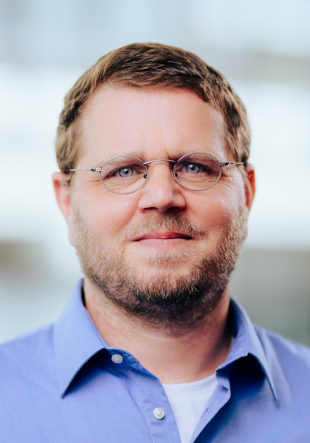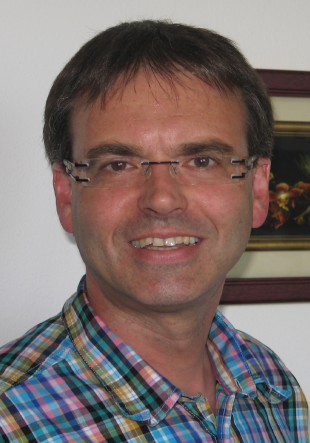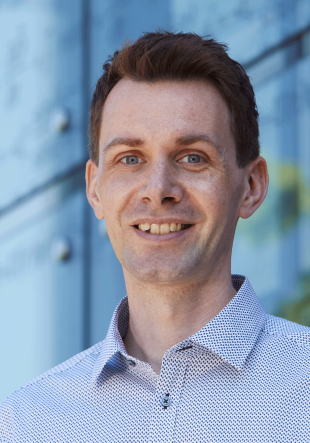SPP 1391: Ultrafast Nanooptics
Overview
The aim of this Priority Programme is to analyse, coherently control and utilise the spatiotemporal dynamics of electromagnetic excitations in metallic nanostructures and hybrid nanostructures. In such systems, electromagnetic excitations tend to be highly localised and strongly enhanced. Such field-localisation phenomena play a key role in a variety of important applications across the disciplines, including the realisation of novel laser structures, the exploitation of optical nonlinearities for ultra-sensitive chemical and biological probing, and the development of enhanced single-photon sources for quantum information processing. The coherent excitation of nanostructures by ultrafast broadband light pulses adds the temporal degree of freedom and allows for controlling the spatiotemporal properties of nanolocalised fields.
The evolving field of ?Ultrafast nanooptics? offers substantially more than the sum of high temporal and spatial resolution. It yields enormous added value by providing access to near-field excitations and interactions that are beyond the reach of existing ultrafast techniques. Understanding and manipulating the electromagnetic field dynamics in nanostructures is a challenging and fundamental experimental and theoretical problem. On the theoretical side, the challenge consists in self-consistently describing the coupled evolution of quantum systems and mesoscopic electromagnetic fields.
The research topics tackled in this Priority Programme cover the coupling between ultrashort laser pulses and nanostructures, the propagation of broadband nanooptical excitations, nonlinear phenomena in nanooptics, and coherent control of nanooptical excitations. In addition to fundamental aspects also new spectroscopic applications are realised in the interdisciplinary field between physics, chemistry and biology.
DFG Programme Priority Programmes
International Connection Denmark
Projects
Adaptive control of tip-enhanced near-field optical signals in carbon nanotubes (Applicant Hartschuh, Achim)
Attosecond probing of localized surface plasmon fields (Applicant Kleineberg, Ulf)
Coordination and workshops (Applicants Aeschlimann, Martin; Pfeiffer, Walter)
Coupling mediated coherent control of localized plasmonic resonances (Applicant Zentgraf, Thomas)
Exciton-plasmon interaction in metal-semiconductor hybrid nanostructures (Applicants Lienau, Ph.D., Christoph; Runge, Erich)
Femtosecond dynamics and control of metal-organic hybrid plasmonic systems (Applicant Bauer, Michael)
Femtosecond quantum optics with semiconductor-metal hybrid nanostructures (Applicant Bratschitsch, Rudolf)
Hydrodynamic Modeling of the Ultrafast Nonlinear Optical Response of Metallic Nanostructures (Applicant Busch, Kurt)
Light propagation and nonlinear optical respnose in silver cluster-porphyrin nanostructures (Applicant Mitric, Roland)
Multipole interactions in nanooptical and plasmonic systems for nanosensors and nanooptical logical elements (Applicant Reinhardt, Carsten)
Nanolocalization of time-reversed coherent optical fields in random scattering media (Applicant Pfeiffer, Walter)
Nichtlineare Wechselwirkungen in einkristallinen plasmonischen Nanoschaltkreisen (Applicants Brixner, Tobias; Hecht, Bert)
Nichtlinieare plasmonische Nanoantennen aus Lithiumniobat (Applicants Pertsch, Thomas; Rockstuhl, Carsten)
Nonlinear optics in complex, chiral, and 3D plasmonic nanostructures (Applicant Giessen, Harald)
Optical coherent control of electrical currents in semiconductor-metal hybrid nanostructures: physics and spectroscopic applications (Applicant Betz, Markus)
Optical spatio-temporal optical control of electron-induced processes at graphene-supported metal cluster nano-structures (Applicant Bernhardt, Thorsten M.)
Optimization, pulse shaping and optical control in nanostructures (Applicant F?rstner, Jens)
Physics and applications of a novel nanometer-sized femtosecond electron souce (Applicants Lienau, Ph.D., Christoph; Ropers, Claus)
Real-time investigation of surface plasmon plariton propagation in nanoscale plasmonic phase structures (Applicants Aeschlimann, Martin; Oesterschulze, Egbert)
Short-wavelength photon and electron emission in free and deposited nanoparticles by controlled ultrafast laserinduced nanolocalized fields (Applicants Fennel, Thomas; Kling, Matthias; Rühl, Eckart)
Simultaneous spatial and temporal control of the local excitation of a nanostructure using polarization-shaped laser pulses (Applicants Aeschlimann, Martin; Brixner, Tobias; Pfeiffer, Walter)
Theory of spatio-temporally resolved optical dynamics - excitation, propagation and detection of elementary processes in hybrid-nanostructures (Applicant Richter, Marten)
Transfer of Angular Monentum by Circularly Polarized Near Fields (Applicants Butt, Hans-Jürgen; Elmers, Hans-Joachim)
Ultrafast nanooptics: Plasmon Coupling, Propagation, and Interference on the Nanoscale, using femtosecond photoemmission microscopy (Applicant Meyer zu Heringdorf, Frank-Joachim)
Ultrafast nonlinear optical response of metallic nanostructures: Collective effects and hybrid materials (Applicant Linden, Stefan)
Ultrafast spatially-inhomogeneous optical nonlinearities of metal nanostructures analyzed by ab-initio based Maxwell-Bloch equations (Applicant Meier, Torsten)
Ultrafast Spectroscopy and Microscopy of Exciton Dynamics in Hybrid Organic solar cell blend film/ Plasmonic Systems on the Nanometer Scale (Applicant Meixner, Alfred J.)
Utilizing a nanoantenna for ultrafast spectroscopy of a single semiconductor nanocrystal (Applicant Lippitz, Markus)
Participating disciplines physics, biology, electrical engineering, chemistry
Spokespersons Professor Dr. Martin Aeschlimann; Professor Dr. Walter Pfeiffer
Key Facts
- Grant Number:
- 72946949
- Project duration:
- 01/2009 - 12/2017
- Funded by:
- DFG
- Subprojects:
-
- SPP 1391 - Optimization, pulse shaping and optical control in nanostructures
- SPP 1391 - Coupling mediated coherent control of localized plasmonic resonances
- SPP 1391 - Ultrafast spatially-inhomogeneous optical nonlinearities of metal nanostructures analyzed by ab-initio based Maxwell-Bloch equations
- Website:
-
DFG-Datenbank gepris
More Information
Results
The goal of the proposed Priority Program (SPP) was to investigate and target the spatiotemporal dynamics of electromagnetic excitations in both metallic nanostructures and hybrid nanostructures. To achieve these goals, the SPP has successfully brought together scientists from the fields of nano-optics, ultrafast spectroscopy, surface physics, chemistry, biology, and electrical engineering. The close and synergy-promoting collaboration between experts from different disciplines was necessary to establish and expand the leading role of German scientists in this young field. This intensively lived interdisciplinarity during the 6 years and the topicality of the planned research work justified the establishment of a SPP in this still rapidly developing research field of ultrafast nanooptics. The most important comprehensive result of the SPP shall be the successful demonstration that coherent broadband excitation of plasmonic nanostructures allows to use the time domain as an additional degree of freedom, thus enabling the control of the spatiotemporal properties of the site-dependent field distributions. Since the dynamics in these nanostructures occur on the femtosecond time scale, novel ultrafast nanooptical spectroscopy methods have been established to elucidate the underlying microscopic physical mechanisms. The description and investigation of the dynamics of electromagnetic field distributions in complex nanostructures posed major theoretical as well as experimental challenges to the members of the SPP. From the theoretical point of view, the work focused on the self-consistent description of the time evolution of quantum systems interacting with a near-field distribution. On the experimental side, methods were developed to map these field dynamics in space and time by combining ultrashort pulse spectroscopy and local coherent control in nanostructures. In particular, diverse techniques have been developed that allow control of local fields in nanostructures with nanometer and (sub-)femtosecond resolution. In the course of the second SPP period, it was also shown that the research field of ultrafast nano-optics offers even much more than the sum of spatial and temporal resolution, e.g., access to near-field excitations and local interactions that are inaccessible with conventional time-resolved methods.



